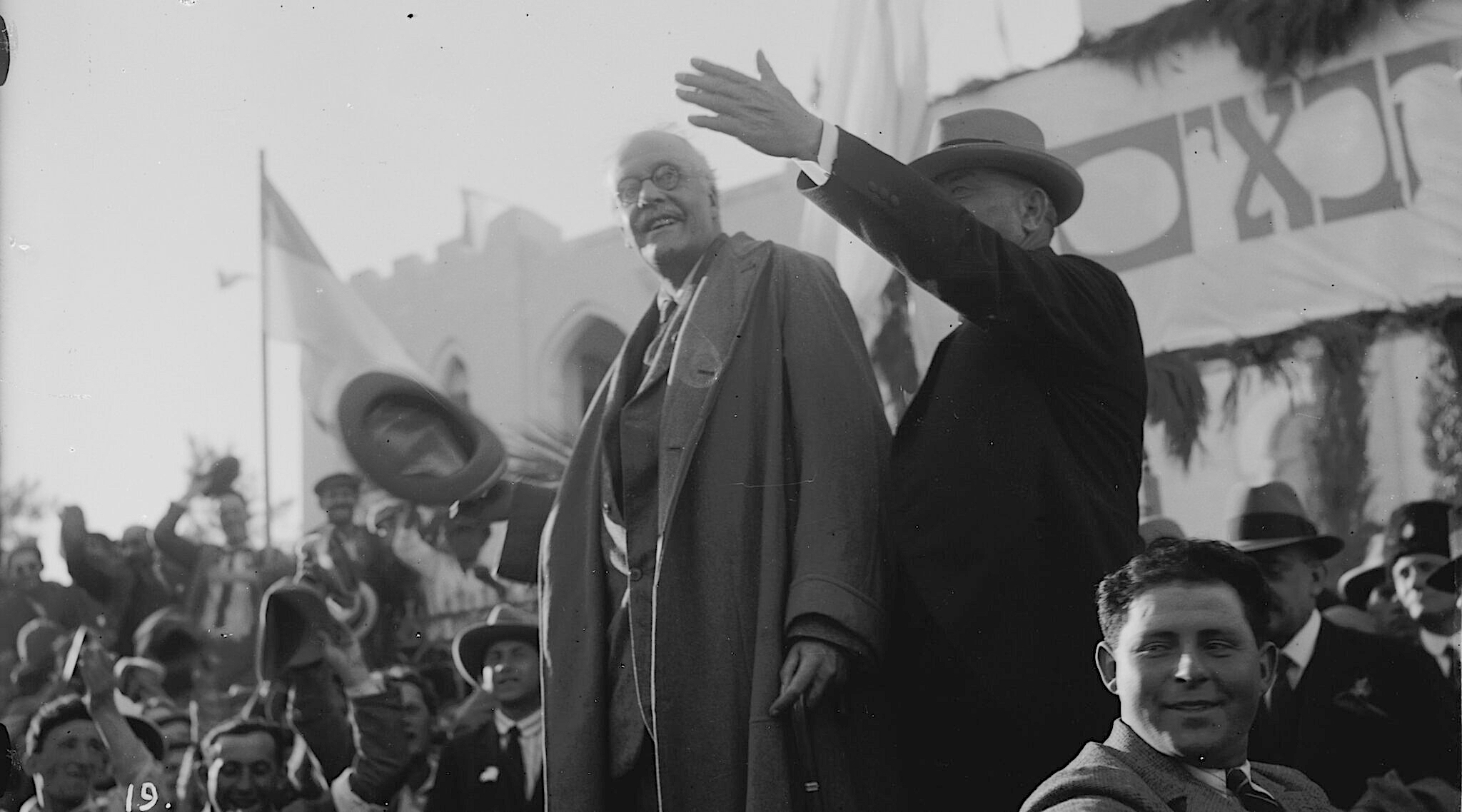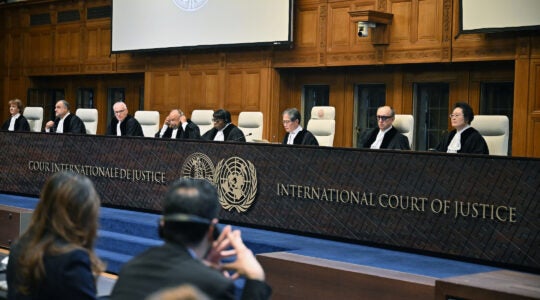(JTA) – This week, police in Cambridge, England, announced they were opening an investigation into a protest act focused on a British lord who has been dead for nearly a century.
Last week pro-Palestinian protesters at Trinity College — part of the University of Cambridge — sprayed red paint onto a 1914 portrait of Lord Arthur James Balfour and then slashed through it. Balfour, when he served as foreign minister in 1917, authored the Balfour Declaration, which committed Britain to “the establishment in Palestine of a national home for the Jewish people,” laying the groundwork for the establishment of the state of Israel three decades later.
Jewish and pro-Israel groups have long celebrated the document for paving the way toward a Jewish state; “Balfour” is used as shorthand to refer to the Israeli prime minister’s residence, which stands on a Jerusalem street of the same name. There is a village in northern Israel named Balfouria.
But pro-Palestinian activists take the opposite view. On the occasion of the declaration’s centennial, Palestinian Authority President Mahmoud Abbas argued that the British government owed Palestinians an apology for it. The Balfour Project, a British advocacy group, has long pushed for the U.K. to present its role in Israel’s founding in a more critical light.
That’s the message the protesters in Cambridge aimed to send as well, saying in a statement on Instagram that “The British paved the way for the Nakba,” the Arabic word for “catastrophe” that refers to the displacement and expulsion of Palestinians during Israel’s 1948 war for independence.
“Written in 1917, Balfour’s declaration began the ethnic cleansing of Palestine by promising the land away — which the British never had the right to do,” the protest group, Palestine Action, wrote. “After the Declaration, until 1948, the British burnt down indigenous villages to prepare the way; with this came arbitrary killings, arrests, torture and sexual violence including rape.”
The vandalism has been condemned by Jewish groups including the American Jewish Committee which called the act “shocking.”
“The Balfour Declaration affirmed the Jewish people’s right to a national home in Israel,” the group said in a statement. “This despicable act of vandalism does nothing to advance the cause of peace; it only spreads more hatred.”
Balfour — a Conservative politician who also served as British prime minister in the early 20th century — attended Trinity College as a student. He died in 1930. The vandalism of his portrait recalls a campaign in recent years by the climate activist group Just Stop Oil, whose members have vandalized multiple paintings at London’s National Gallery.
This was only the latest example British pro-Palestinian activists making an example of Lord Balfour: Palestine Action also squirted ketchup onto a statue of him in the United Kingdom’s House of Commons in 2022. Around the same time, Palestinians in Gaza crossed out and then stepped on an image of Balfour during a ceremony.
According to “A History of the Jewish People,” edited by Haim Hillel Ben-Sasson, the declaration was encouraged by British Zionists. In the depths of World War I in 1917, German officials also began contemplating a Zionist declaration in order to win over Jewish favor. Britain, which was in the midst of conquering Palestine from the Ottoman Empire, decided to make one first.
Initially drafted by British Zionist groups in July of 1917, the declaration was made in a letter dated Nov. 2 from Balfour to Lord Lionel Walter Rothschild, honorary president of the Zionist Federation of Great Britain and Ireland.
“His Majesty’s Government view with favour the establishment in Palestine of a national home for the Jewish people, and will use their best endeavors to facilitate the achievement of this object, it being clearly understood that nothing shall be done which may prejudice the civil and religious rights of existing non-Jewish communities in Palestine, or the rights and political status enjoyed by Jews in any other country,” the text reads.
The declaration was a sign that a Great Power was willing to endorse a Jewish “national home” in Palestine. After World War I, the British took control of Palestine and received a mandate to govern it via the League of Nations, a situation which would exist for the next 28 years until Israel’s establishment.
The Balfour Declaration notes that a Jewish commonwealth should not come at the expense of the civil rights of the Arab majority in Palestine, but Arab groups were strongly opposed to the declaration, which they felt conflicted with assurances they had received from the British. After initially encouraging Jews to immigrate to Palestine until 1939, the British halted nearly all Jewish immigration in the wake of the 1936-1939 Arab Revolt.
Responding to the defacing of the portrait, Israeli-American philosopher Judea Pearl wrote on X, formerly Twitter, that he values the declaration not just for supporting Jewish national aspirations, but because the subsequent wave of immigration facilitated his family’s departure from Europe ahead of the Holocaust.
“500,000 European Jews, including my family, owe their lives to Lord Balfour, whose 1917 declaration gave them a license to escape antisemitic Europe and rebuild their homeland in Eretz-Israel,” wrote Pearl, the father of murdered journalist Daniel Pearl. “I will post and repost their story… every time the Barbarians vandalize Balfour’s portrait, or any other relic of Western civilization.”
JTA has documented Jewish history in real-time for over a century. Keep our journalism strong by joining us in supporting independent, award-winning reporting.






